
I’ve always been a fan of the end of the world. Wait, I mean the fiction. But I’m not the only one.
Fallout’s all the buzz at the moment, but coincidentally I’ve been reading a variety of post-apocalypse fiction recently. And I mean that, it’s coincidence. But what gives? Why is this stuff so popular, and why has it been popular for so long?
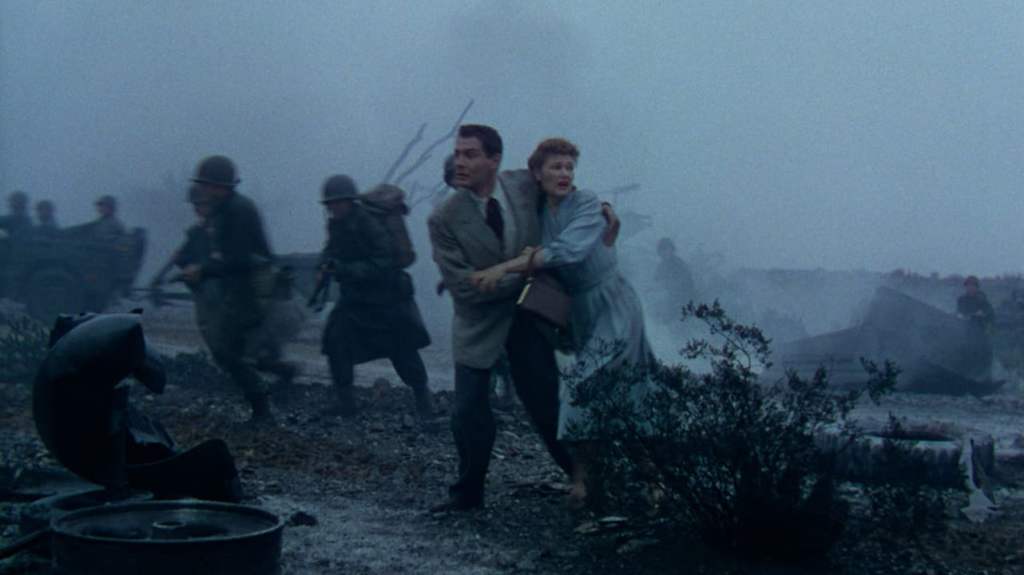
Speculation about world-shattering events has gone on at least since the story of Noah’s Ark and the Flood, so there’s a general appeal. But we’ve had some world-shaking events in the real world, some relatively recently, that have preyed on the minds of those who lived through them. Widespread outbreaks of disease. The Napoleonic Wars. The World Wars. The Cold War. Revolutions and the fall of nations. What do these things have in common?
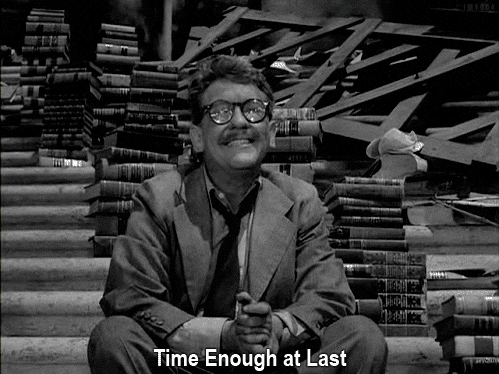
Two things. First, Change. On a grand scale. Which is something that humans fear. But secondly, how would you react to such change? What are the new possibilities? Think about that for a minute. Is this Opportunity?

Say you think the world as it is, is unjust. Or you feel hampered by the demands of your society. Sixty-hour work weeks seem a bit unreasonable? Boss is a jerk? Government isn’t addressing the issues you prize? How about a flash, and then some nuclear winter? How do you think you’d do, on your own? Apparently it’s fun to speculate, or we wouldn’t have an appetite for this genre.
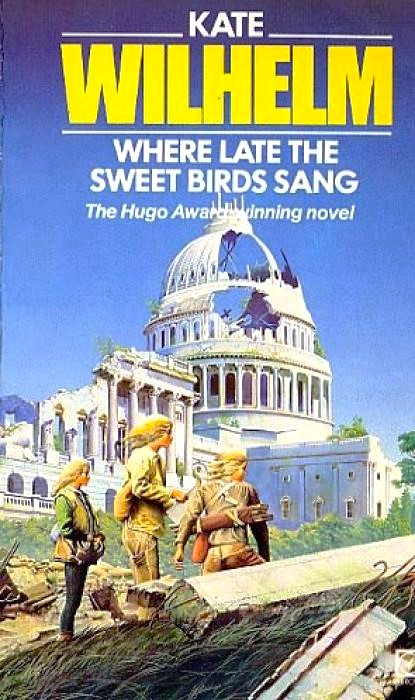
Here’s a book I read recently. The world goes to hell except for one valley in Virginia. To make things worse, the survivors end up sterile. Fortunately (?) there are scientists and lab equipment. Can the human race survive? Just how far down will their tech level drop, and will they ever regain what we have lost? Those are the questions that need answering in any post-apocalypse setting. But how do the personal lives of our protagonists go? Wilhelm’s writing style reminds me somewhat of Ray Bradbury’s. Part of that may be the almost bucolic slant here. But this novel spans generations, and we leave behind the original survivors of the disaster to move on and see what happens next. This one isn’t too far off from a Fallout game, although the challenges are either societal or environmental. No firefights with mutants.
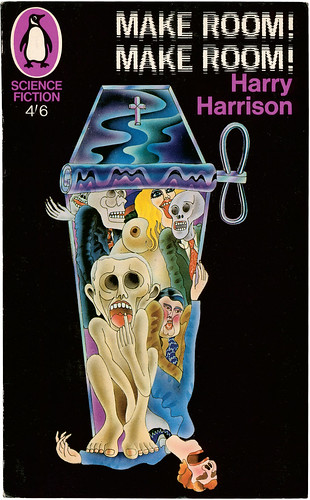
Here’s a classic I hadn’t got to until recently. Harry Harrison, author of Bill the Galactic Hero and The Stainless Steel Rat, made waves with this glimpse into a planet sucked dry of resources by an ever-expanding populace. The story takes place in 1999 and details the miserable life of a police detective in the dystopia of New York City. He’s no Charleton Heston, but at least in the novel they’re not recycling people into human kibble. It’s a really great book, moving but depressing. Dude, it’s a dystopia!

This one hadn’t crossed my desk until recently, but it had been on my radar to read since it gets talked up as such a masterpiece. As a showpiece of science fiction’s “new wave” movement of the 1960s, Brunner indulges is some concentrated non-linear story-telling. The medium is the message, as McLuhan said. (Do you recognize my references, dear readers? Or at least type them into a search window?) I, on the other hand, found this very off-putting. I’m over the movement, I just want to read an engaging story with protagonists I can relate to. Brunner is indulging in what was considered shocking at the time. I struggled along, battling with the format, breezing past ideas that are talked-out by now, and found that I had to absorb way too many pages to get a smattering of story. I put it down, and leave it to you to make up your own mind. Brunner is praised and I have no problem with that, but this book isn’t for the 2024 version of me. To sum up, it’s certainly dystopic, humanity is made up of bad people, but the conflict is all based on the society. There’s no game inspiration here.
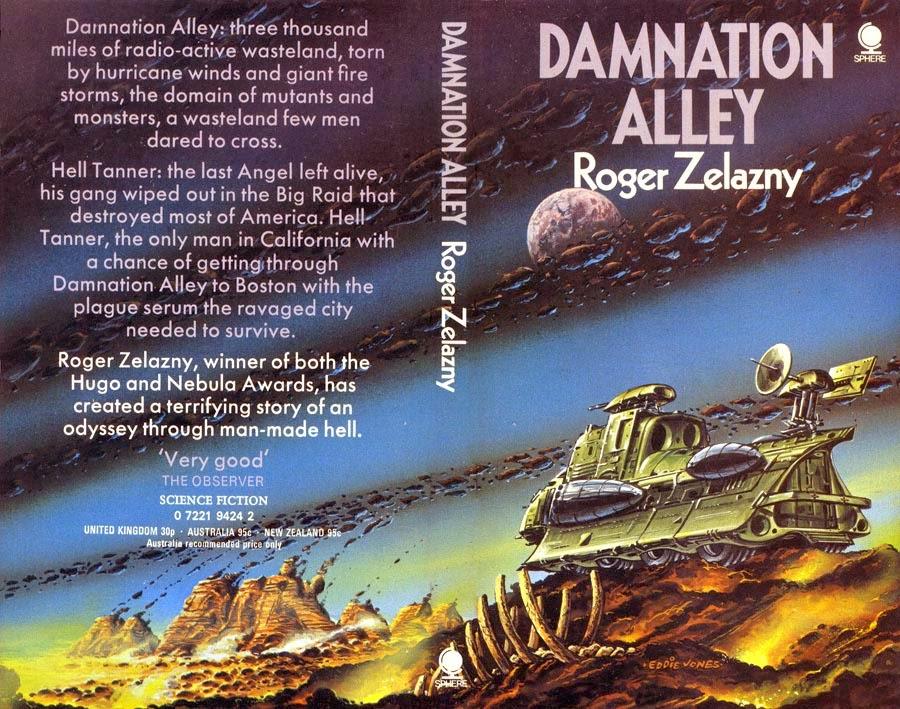
I like Zelazny’s work very much but had avoided this book because the 1977 movie is just so damned bad. Turns out that’s not Zelazny’s fault. This book, while still a dystopia, is a thoughtful character arc for an ex-Hell’s Angel named Hell Tanner. And no, that’s not a nickname. The term Damnation Alley apparently applies to all of the fly-over country between Los Angeles and Boston, after nuclear war. It is to laugh. The very environment is punishing the survivors, and it’s very much in question whether the end is near — or if everyone should just lie down and die, as one character suggests. My conjecture is that Zelazny means for us to consider carefully and then conclude that life is indeed worth living.

In any case, it’s a great book and inspired the $350,000 Landmaster. As a result, much can be forgiven (although the movie is still garbage). Tons of inspiration for gaming in both book and movie though. Radiation and even mutations! Combat vehicles! So boot up the computer or grab some dice, and let’s play!
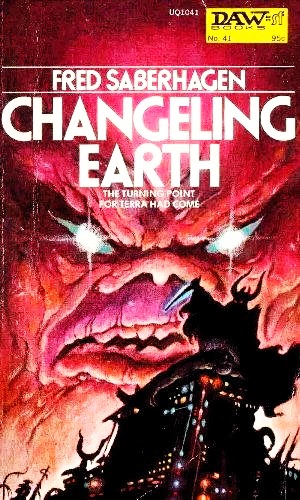
Fred Saberhagen wrote a series now known as the Empire of the East novels. I read the one above when it came out, and just recently (re-)read the first three novels (there was a follow-up written in 2006 that takes place 1,000 years later but I elected to skip that one). This story has D&D written all over it! An AI changes our reality at the last second to keep nuclear war from completely destroying the world. (Nice trick.) What that does essentially is swap tech for magic. So the barbaric inheritors of the Earth have to deal with all kinds of crazy, including demons and mutants. It’s very Bakshi in feel, and it’s easy to see how Gary Gygax credited it as part of his inspiration. You have to see where 1980’s Thundarr the Barbarian got its ideas from. These are a lot of fun.
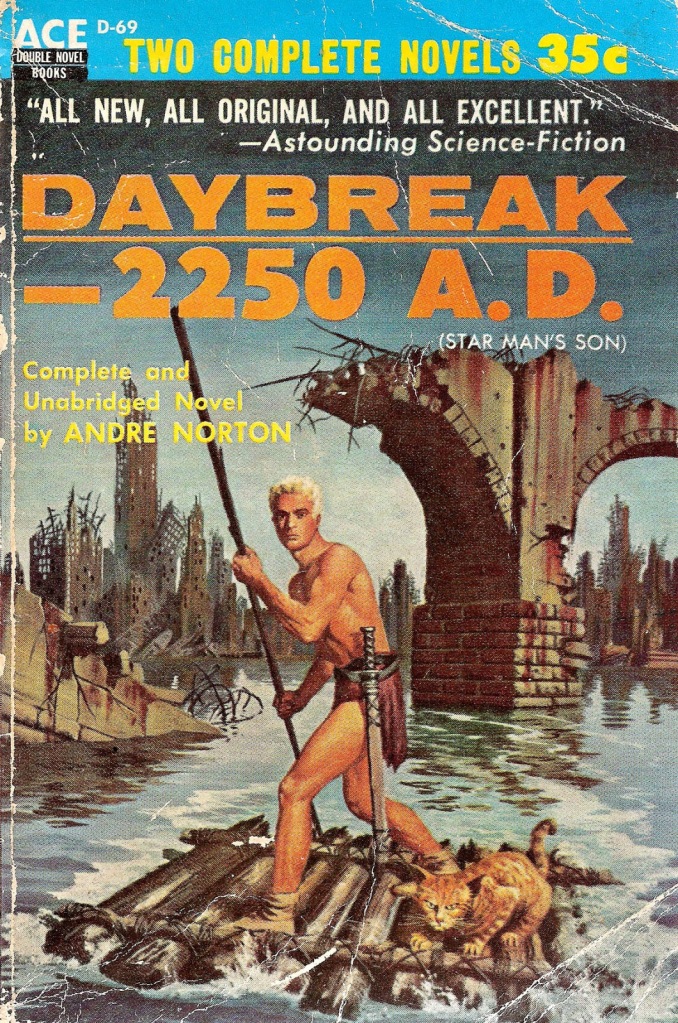
Here’s one from librarian Andre (real name Alice) Norton. Norton wrote so many novels, and I can’t think of one I didn’t enjoy. Science fiction, fantasy, even fictionalized history, Norton was out to tell stories. If there are bad people in some, they are the antagonists. If there are dystopias, there is hope (at least by the close of the story). She always kept her audience in mind, and even though only writing adventure fiction, no one could accuse her of being a bad influence on anyone. I’d just like to point out that she often depicts racism and so forth as something to be overcome; not something you’d necessarily expect from a person born in 1912. If you had to pick an author to emulate, you could do far worse than choosing Norton.
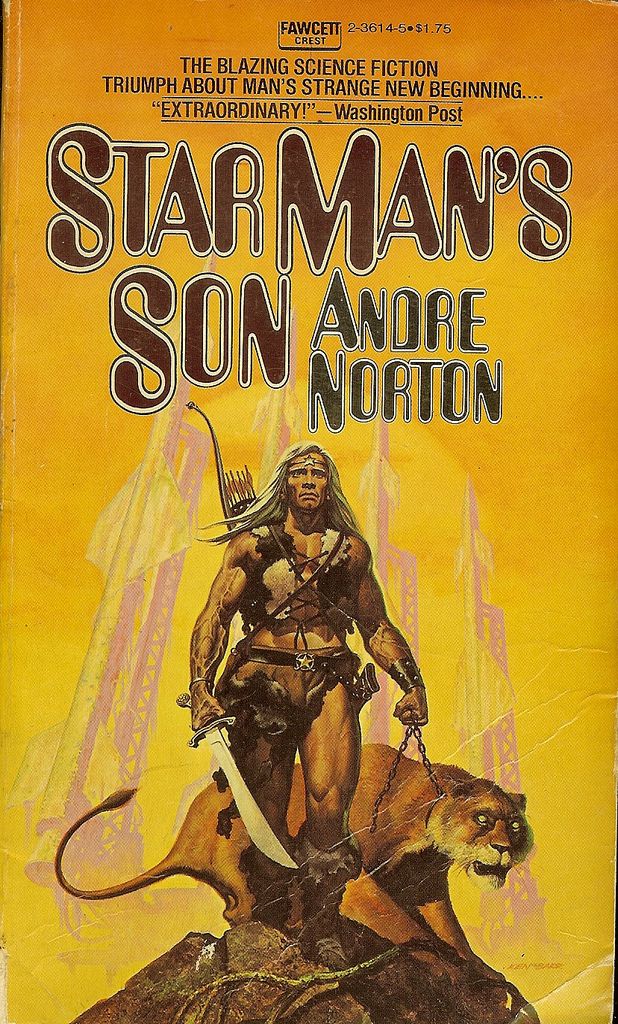
Also known as Star Man’s Son, our hero is a mutant in a post-nuclear war setting. Once again humanity was foolish, and our descendants have to bear the burden of our sins. Humanity is literally tribal (as opposed to today’s factionalism) and just as susceptible to nonsense as were the ones responsible for detonating the bombs. Our protagonist journeys about so we can see the various groups and their lifestyles. There’s action and danger and (bad) mutants. There’s belligerence and prejudice and injustice — why, just like today! Characters evolve and by the close there is hope for humanity. A very nice tale, and suitable for D&D or Gamma World or games of that ilk. Sorry, there’s nothing here for ironmongers and road warriors, technology has been lost.

I also read another one by Norton, 1975’s No Night Without Stars. (By the way, isn’t that an evocative title? Wilhelm’s Where Late the Sweet Birds Sang is another.) Again, nuclear war has changed the world. We still have animal companions though, Norton loves that. (Remember Beast Master?) Can humanity overcome its destructive madness, or are we doomed? As always, Norton leaves us with the possibility of redemption as a species. By the way these aren’t even the only post-apocalypse novels from Norton. I know I’ve read others. But I read/re-read these two in the past couple of weeks.
So what have we learned? Our society, with its technology and its laws and its bad actors (not thespians) is a fragile thing. We daydream and / or worry about what would become of us and our children should short-sighted foolishness wipe it all away. Could we survive? Could we fashion a new society, perhaps a better one? Should we even bother, or should we let the reign of humanity pass away in favor of new inheritors of Earth?

In any case, it makes for good fiction. And good gaming.